Table of Contents
Don’t suffer on your next hiking trip, learn these hiking tips to make your life and journey a whole lot easier.
At the same time look like an absolute boss, showing off you incredibly cool new acquired skills.
Let’s get right into the hiking tips with no.1 which is definitely one of my favourite hiking activities. Enjoy 🙂
Hiking Tips Quiz
Score: 0
Questions Remaining: 10
Game Over
Your Score:
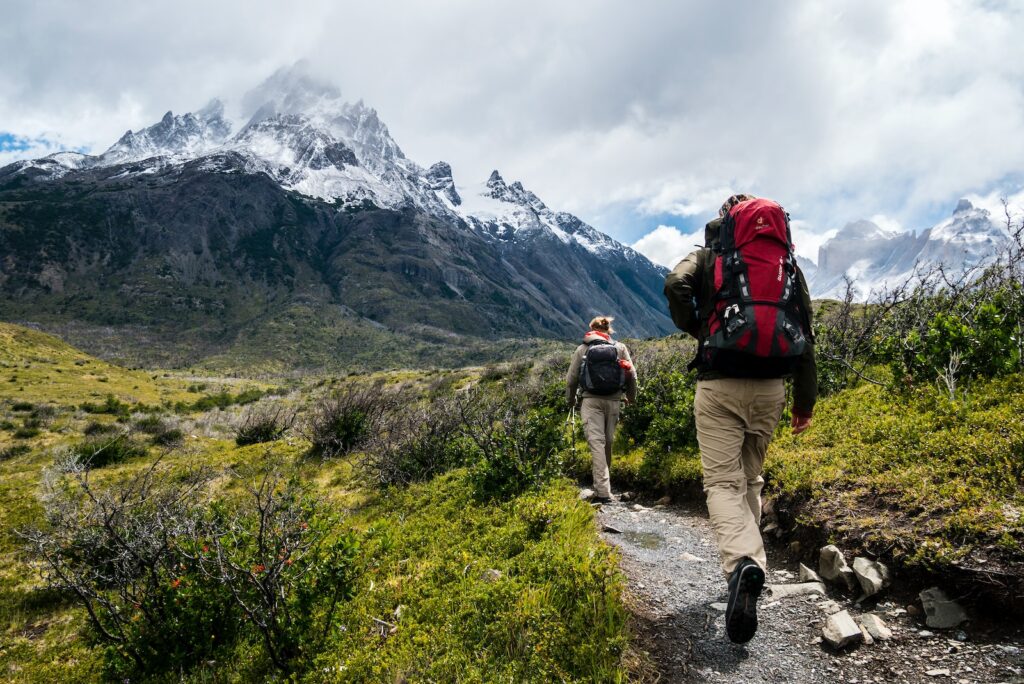
Learn fire making.
Practise makes perfect and what better place to do it than your own backyard.
Grab some twigs, grab some fire starters some matches and have water handy just in case everything gets out of hand.
Spark, Oxygen, Fuel
Building a good campfire is an art and a science, hinged on the careful consideration of three essential components: ignition, fuel, and oxygen. Understanding these key elements is the first step to mastering the art of fire creation and guaranteeing those mesmerizing, crackling flames that make for unforgettable campfire tales.
Ignition: The Spark that Starts it All
When we think of ignition in the context of a campfire, we often visualize a match or a lighter. However, it’s vital to remember that the ignition process involves more than merely providing a spark. The type of match or lighter you use, the conditions in which you strike the match or light the lighter (is it windy? rainy?), and even how long you apply the initial flame to your tinder—all contribute to the ignition process. A windproof or waterproof match, for instance, might be worth considering if you’re camping in challenging weather conditions.
Fuel: More than Just Wood
Fuel is indeed the heart of any campfire. However, fuel doesn’t only refer to logs of wood; it also includes the smaller pieces of tinder and kindling that are essential for starting and sustaining your fire. Tinder can be dry leaves, grass, or bark, while kindling typically includes small twigs and branches. It’s crucial to collect a variety of sizes, from small twigs to larger logs, to ensure a steadily burning fire. Using fire starters or commercial fire logs can also be beneficial, especially in damp conditions where finding dry wood might be difficult. Remember, wood selection is key—softwoods like pine and spruce catch fire quickly and are excellent for kindling, while hardwoods like oak or maple burn longer and are ideal for sustaining your fire.
Oxygen: The Breath of Life for Your Fire
Oxygen is the often-underestimated component of a good fire. However, without sufficient airflow, a fire can’t sustain itself, let alone thrive. When building your fire, pay careful attention to the structure. A common technique is the teepee or pyramid structure, which allows for adequate airflow while protecting the inner layers from wind. The spaces between the logs, twigs, and tinder should allow air to circulate freely. As your fire burns, continue to monitor and adjust it as necessary to maintain proper airflow.
Mastering the art of fire creation is a delicate balancing act involving ignition, fuel, and oxygen. By understanding these components and learning how to manage them, you can ensure a roaring, crackling fire that will light up your campsite and lend warmth to your camping experience. Remember, a good fire is the heart of any camping trip—treat it with the respect and care it deserves.
You won't always have the perfect conditions
Starting a fire under perfect conditions is a useful survival skill. However, mastering the art of fire-starting in less than ideal conditions is a different ball game entirely. Once you’ve successfully mastered your chosen fire-starting technique, it’s time to up the ante and put your skills to the ultimate test.
Begin by simulating a scenario where your wood supply is soaked, as might happen after a heavy dew or a sudden downpour in the wilderness. This is when your problem-solving skills come into play. Start by trying to find the driest pieces, those that were shielded under thicker logs or deep inside a pile of wood. If your wood is damp on the outside, you could try shaving the bark off to expose the dryer inner wood.
After you’ve managed to successfully light a fire with damp wood, take your practice a step further. Now, try to recreate this experience as if it was raining. A simple and safe way to do this is to use a garden hose to sprinkle water around your fire area. This adds another layer of complexity to the task, requiring you to protect your fire and fuel from the simulated rain.
Remember to stay patient and persistent, as these conditions are challenging and it may take several attempts to succeed. These trials will give you a taste of real-life scenarios where the weather is unpredictable and resources are not always ideal. In such situations, the ability to adapt and persevere could mean the difference between a warm, comforting fire and a cold, cheerless night in the great outdoors.
Learn to pitch a tent.
Remember, pitching a tent is like choreographing a dance with nature – do it right, and you’ll stay cozy and dry, even if the raindrops tap dance on your tent, or the wind decides to waltz in. A well-pitched tent stands tall, hugging the ground tightly, and you should be able to pop it up in a jiffy!
That’s why it’s an excellent idea to practice tent setup at home before you venture out on your exciting camping journey. Think of it as a pre-adventure adventure! You’ll get to familiarize yourself with the tent, the poles, the stakes, and that little bag of extra bits and pieces. Plus, you’ll have the manual close at hand, guiding you through the process, step by step.
Once you’ve mastered setting up and taking down your tent, you won’t have to carry the manual on your backpacking trip. After all, every ounce counts when you’re on the trail!
Now, here’s a delightful idea: why not have a trial camping day in your backyard? It’s a fantastic way to practice your new skills and, let’s be honest, it’s just good old-fashioned fun. So roll out your sleeping bags, fire up that barbecue, and enjoy a night under the stars, right in the comfort of your own backyard!
Creative Pegs
Isn’t it exciting when life throws us little challenges? And when you’re camping, such surprises can truly spice up your adventure! For instance, you might have to set up your tent without all the usual tools. Maybe a few pegs have gone missing, or the ground beneath is too hard for pegs, or you find yourself surrounded by trees. But hey, no worries! Consider these opportunities to think outside the box and let your inner MacGyver shine!
Embrace your surroundings and let Mother Nature lend you a hand. If the ground is unyielding, scout around for heavy rocks. They’ll work perfectly to anchor your tent ropes, giving you a secure and stable setup. Nature’s got your back!
And if you’re surrounded by a multitude of trees, well, you’re in luck! Those sturdy trunks can provide excellent support. Simply tie your tent to the nearest tree and voila! You have a cozy shelter, snug amongst the woods.
Caught in a rainy situation with wet soil? Don’t worry! Try this hack: position your pegs at a 45-degree angle, pointing towards the tent, then place rocks on top for added stability. This will secure your tent nicely even in moist conditions.
Backpacking in the wilderness is all about flexibility and resourcefulness. Improvisation is not just a solution, it’s part of the fun. So, let’s embrace the unpredictable and create a memorable camping story together! Happy camping!
Find out how to remain warm.
Isn’t it exciting to think you can make your camping adventures more comfortable with just a few simple tricks? Well, the good news is – you can! And what’s more fun than testing them out in your very own backyard first?
Start by setting up your tent right in the heart of your garden. Once you’ve got that secured, let’s deal with the wind. Use natural windbreakers like fences or bushes, or set up a tarp. You’ll be amazed at how much cozier your tent becomes without the wind’s chilly bite!
Now, don’t forget your hat. Just like mom always said – you lose most of your heat through your head. Wearing a hat, even when you sleep, can help hold in that precious warmth. It’s a simple trick that can make a world of difference on a cold night.
And here’s a fun fact! Eating fatty foods before you snuggle into your sleeping bag can help you stay warm. Fatty foods take longer to digest, which means your body generates heat over an extended period. So, go ahead and indulge in some s’mores or a hearty, cream-based soup before bedtime.
Practicing these techniques in your backyard is not just a practical way to prepare for your outdoor adventures, but it’s also a fantastic opportunity for some extra family bonding time.
Layer up like an Onion
Staying warm outdoors can be as easy as peeling an onion, but in reverse! Dressing in layers is the magic key to keep cozy, even in chillier conditions.
Think of it as building a comfy, warm cocoon around you, just like layering a scrumptious lasagna. Start with a snug singlet, then pile on a shirt, followed by a cozy jumper. It’s a simple, yet effective way to dress for warmth.
The same principle applies for your legs and feet too. Slip into a pair of warm socks, then add another pair for extra coziness. Don pants over thermal leggings to keep your legs toasty warm.
Why does this work, you ask? Well, by layering, you create pockets of warm air trapped between the layers, acting as an insulator. These layers keep your body heat in and the cold out, ensuring you stay warmer for longer periods.
Remember, being outdoors is all about having fun and creating memories. So dress smart, stay warm, and enjoy your adventure!
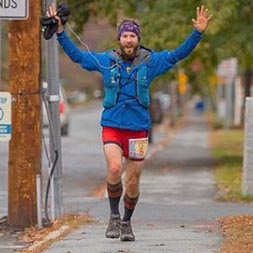
Cotton is not your friend
One of the fun things about getting ready for a camping trip is picking out your clothes! Here’s a little tip to help you stay comfortable and warm on your adventure – avoid packing cotton clothes. Although cotton might feel nice and light, it doesn’t retain heat very well and tends to hold onto moisture. This could lead to a chilly experience, or even hypothermia if the weather turns cold.
Instead, consider choosing woollen clothes for your trip. It might surprise you, but wool is fantastic! It’s soft and cosy to wear, and it does an amazing job at wicking moisture away from your body (it moves moisture away to help keep you dry).
Another perk of wool? It dries quickly and doesn’t hold onto odours, which is a blessing when you’re out in nature without access to a washing machine. So, for a happy, healthy, and warm camping experience, give wool a whirl!
Don't keep it in
Here’s a little tip that’s going to make your camping nights so much cozier! Make it a habit to use the restroom right before you snuggle into your sleeping bag for the night. It’s a small detail, but it can make a significant difference.
When you do this, your body can focus all its energy on keeping you warm and toasty, instead of wasting it on heating up the urine inside your body. It’s a nifty bit of science that can help you beat the chilly camping nights!
And, let’s face it, who really enjoys having their peaceful slumber interrupted by a middle-of-the-night bathroom run? It’s far better to stay snug in your sleeping bag, comfortably drifting off to the sound of nature around you. So, remember to make that pre-bedtime bathroom visit a part of your camping routine. It’s a simple step towards a happier, more comfortable camping experience. Sweet dreams!
Keep yourself off the ground
When it’s time to sleep under the stars, remember, cozy warmth is key! To avoid losing your toasty body heat to the cool earth, consider lifting yourself off the ground with a camping mattress or even a thick bed of leaves and grass.
The ground can sometimes be an eager but unwelcome ‘heat thief’ that cools down quickly, even after you’ve shared your warmth with it. So, ensure you have a comfortable barrier beneath you. This simple hack will not only lead to a peaceful night’s sleep but also help you wake up refreshed and ready for another day of adventures, without the discomfort of sore muscles or bones.
Warm Water to the rescue
Are you still feeling chilly in your sleeping bag? Don’t worry, we’ve got a nifty trick to get you cozy in no time! All you need to do is warm some water, then carefully pour it into a durable bottle.
Now, tuck this little warmth-generator into the bottom of your sleeping bag. Within a few moments, you’ll start to feel a delightful warmth spreading from your toes to the rest of your body. It’s like having your personal, portable heater!
Get the right Sleeping Bag
Have you ever wondered about the multitude of sleeping bag options available in the market? Interestingly, some are crafted exclusively for men, while others are designed with women in mind. Isn’t that fascinating?
This isn’t a marketing ploy but a thoughtful response to our unique physiological differences. You see, typically, women tend to feel chillier than men. This happens because women’s bodies are remarkably engineered to prioritize keeping vital organs warm, especially those that support the reproductive system.
Hence, women’s sleeping bags are specially tailored with extra insulation to provide the warmth needed for a good night’s sleep outdoors. So, remember, next time you’re shopping for camping gear, consider these differences. It’s not just about the fit, but also about your comfort and wellbeing during your outdoor adventures. Isn’t it wonderful how these little details can enhance your camping experience?
Eat high energy snacks
Let’s make bedtime a little more delicious, shall we? Just imagine: You’re snuggling under your cozy blankets, a wonderful day of glamping behind you, and there’s one last delight to savor. A night-time snack that’s not just yummy, but also loaded with nutrients to keep your body nourished throughout the night.
Picture a handful of almonds, a dab of peanut butter on whole grain toast, or a bowl of cherries. How about Greek yogurt drizzled with a bit of honey? These aren’t just satisfying, they’re power-packed goodies that your body will love.
Snacking before bed isn’t about indulging in late-night cravings, it’s about giving your body a steady supply of nutrients while you’re catching those Zzzs. So go ahead, end your day with a nutrient-dense nightcap. Your body will thank you, and hey, sweet dreams are made of these, aren’t they?
For more ideas on foods you can eat before bed check out this article 7 high energy foods to warm you up during winter
Stay Hydrated
Here’s a surprising fact that might change the way you think about hydration – it’s just as crucial in cold weather as it is in hot! Yes, you heard it right. Even though we don’t usually link feeling chilly with being thirsty, our bodies tell a different story.
You see, our bodies are like wonderfully complex machines, with water being the oil that keeps everything running smoothly. This magic liquid makes up a large part of us and helps our bodies function in their best possible state.
But what happens if we don’t hydrate enough, especially when it’s cold? Well, our bodies need to work overtime to compensate, which means energy is diverted from keeping us warm to trying to run basic bodily functions. So, in essence, staying hydrated is like giving your body a lovely, warm hug from the inside, and who wouldn’t want that?
So the next time you’re braving the cold, remember to take a water break. Your body will thank you for it, and you’ll feel more energetic and warm. Keep sipping, keep smiling!
Learn to prepare your food over the fire
Cooking outdoors might seem like a daunting task at first. Between blocking the wind, maintaining the right temperature, keeping the fire steady, and ensuring safety, it’s easy to feel overwhelmed. But don’t worry, every master griller was once a beginner too!
Think of these challenges as part of the adventure. Creating a windblock can turn into a fun game of finding the perfect spot or arranging rocks strategically. Covering the pan is an opportunity to watch how nature responds to heat, witnessing how steam dances off the surface. Keeping the fire going? Well, that’s just feeding the heart of your outdoor kitchen, and it’s beautiful to watch it glow.
And remember, a bit of sizzle on your fingers doesn’t mean defeat; it’s just a nudge from nature to remind you of your role in this natural cooking dance.
So, keep experimenting, learning, and above all, enjoying the process. With every attempt, you’ll grow more confident and adept. Soon, you’ll discover the joys of cooking amidst nature, turning every outdoor meal into an unforgettable experience. Keep practicing, and you’ll find your perfect recipe for success in no time!
PUT A LID ON IT
Can you spot the clever trick in the title? A wink and a smile for you!
Speaking of clever tricks, here’s a delightful one for your camping cookware. Do ensure you’ve got lids for your pots and pans. You’ll find it’s like having an extra helper around the campfire!
A lid works magic by helping to heat your food more evenly and efficiently. You can take a hike, enjoy nature, and come back to perfectly simmered food. It’s like your own outdoor slow cooker!
Storing your leftovers? Just pop the lid on your pan! It keeps your food safe and fresh for those sudden snack cravings.
But wait, there’s more! Flip that lid over and voila, you’ve got yourself an instant plate, complete with a handy handle in the middle. Now that’s what we call versatile camping gear!
Don't burn your hands
In the joyous spirit of outdoor cooking, there’s one tool that can be a real game-changer – the trusty spondonicle! This ingenious little tool is perfect for safely handling your heated pots and pans. Say goodbye to the risky business of trying to reach for scorching hot cookware with your bare hands.
If you’ve ever experienced a minor mishap with hot pots, you’ll know it’s a lesson learned the hard way. With a spondonicle in your kit, you’ll happily sidestep such adventures, keeping your fingers safe and your spirits high!
Additionally, a tube of burn gel can be a handy friend in your camping first-aid kit. While we always hope to avoid accidents, being prepared is a part of smart camping. A quick application can provide immediate relief in case of small burns.
Respect Trail Signs and Markers
Trail signs and markers serve as friendly companions along the trail, guiding you through the beautiful landscape and helping you navigate with ease.
They are like little cheerleaders, cheering you on as you venture into nature’s wonders.
By respecting and adhering to these signs, you can avoid getting lost or straying off the designated path, ensuring a safe and pleasant hiking experience for yourself and others.
Have you got any hiking tips of your own? Comment below to get them featured on this page.
Don't pour fuel on the fire
I have seen it happen multiple times where someone is cooking at a fire and next moment someone pours methylated spirits on the fire.
Next moment there is a massive panic, eyebrows are burnt and a few holes appear in the clothes of the person who was cooking.
This is a likely scenario, but I have heard of people needing to be airlifted due to the fire exploding into a person’s eyes.
So make sure to never add fuel to the fire when someone is standing around it. Either wait or ask them to make some space.
Cook your food on COALS
When it comes to cooking over a fire, there’s a helpful tip that can make a world of difference! For most dishes, it’s best to utilize the red-hot coals rather than the roaring flames. Here’s how you can do it:
First, build a robust fire to generate a good bed of hot coals. Once the fire is blazing, gently push the majority of the logs to one side, revealing the precious red-hot coals underneath. This is where the magic happens!
Next, carefully transfer the hot coals to a separate spot, creating a cozy little pile away from the intense heat of the fire. These glowing coals will be your cooking surface, providing even and controlled heat.
Now comes the fun part! Place your pots and pans directly on the bed of coals and let them work their culinary magic. For an extra treat, wrap a few potatoes in aluminum foil and nestle them into the coals alongside your cookware. As your main dish sizzles, the potatoes will cook to perfection, adding a delightful side dish to your outdoor feast.
Remember, cooking with coals allows for precise temperature control, ensuring your food is cooked to perfection.
Learn about edible plants
Exploring the natural world around you can be an incredibly joyful and rewarding experience. Imagine walking through the wilderness and being able to identify cattails and a handful of wild edible berries. Not only does this knowledge enhance your journey, but it also provides a sense of self-reliance and can come in handy in unexpected situations.
If you ever find yourself in a situation where your food is compromised, knowing which wild edibles are safe to consume can be a valuable skill. However, it’s important to approach foraging with caution and proper knowledge. Always consult reliable guides specific to your area to ensure you’re identifying plants correctly. When it comes to mushrooms, it’s generally best to exercise caution unless you’re well-versed in mushroom identification.
By arming yourself with the right knowledge and resources, you can embark on your outdoor adventures with confidence, knowing that you have the skills to identify useful and edible plants.
Learn how to walk
Believe it or not, many people tend to let their feet turn outward instead of maintaining a straight-ahead position while walking. This subtle misalignment can lead to inefficient movement and unnecessary energy expenditure.
To enhance your walking experience, why not explore different terrains? Walk on rocky paths, sandy beaches, or uneven slopes. This fun and adventurous approach to walking not only adds variety to your routine but also helps improve your balance and stability. Try it with and without your backpack to challenge yourself even further.
Learn the proper way to wear your backpack
If you’re carrying a backpack with a harness, here’s a helpful tip to ensure maximum comfort and minimize the risk of long-term injury. It’s essential to distribute the weight properly to avoid straining your shoulders.
Make sure that about 80% of the weight is resting on your hips, while only 20% or less is on your shoulders. By doing so, you’ll not only feel more comfortable during your adventures but also safeguard yourself from potential injuries that can arise from wearing the backpack incorrectly.
To check if your backpack is resting well on your hips, try this simple test. Slide your hands in and out from under the shoulder straps with ease. If you can do this smoothly, it’s a good indication that the weight is properly supported by your hips, allowing for a more enjoyable and pain-free hiking experience
Learn to pack your bag correctly
Packing your bag correctly is key to ensuring a comfortable and enjoyable hiking experience. By keeping the center of gravity in line with your body, you’ll feel a significant difference in the way your bag feels as you carry it along the trail.
Here’s a helpful tip: Start by placing the heavier items closer to your back, distributing the weight evenly. This not only helps maintain balance but also prevents unnecessary strain on your shoulders and back. Place lighter items towards the top and front of your backpack.
Taking the time to organize and pack your bag thoughtfully will make a world of difference. You’ll feel more agile and balanced, allowing you to focus on the beauty of the surroundings and the joy of the hike itself.

Waterproof, Waterproof... Did I say Waterproof?
Absolutely, folks! Embrace the joy of waterproof bags, your best friends on a camping trip. These could be simple trash bags or even heavy-duty waterproof ones. Wrap your sleeping bag, your mattress, your clothes, and yes, even your electronics in them.
Remember, when it comes to camping, there’s no such thing as too much protection from water. Imagine the disappointment of water seeping through your belongings. Do we really want that?
Or would we rather unfurl a toasty, dry sleeping bag at the end of a drizzly day, sliding into its comforting warmth? Well, I know my answer! Let’s keep our adventures dry and our spirits high, happy campers!
Learn your animals
First and foremost, encountering wildlife during your camping trip is not only a thrilling experience, but it also offers valuable insights. Knowing your forest friends from potential foes can be life-saving.
Can you differentiate between a bear’s “bluff charge” and a genuine attack? The wrong response, such as playing dead during an actual attack, could put you on the bear’s menu. A useful tip: loud noises often indicate the bear is just trying to scare you off, but you should delve deeper into this topic.
Furthermore, understanding various snakes and spiders boosts your outdoor savvy. It empowers you to assess whether you’re in a hazardous situation or not. So, let’s venture into the wilderness, brimming with knowledge and bristling with excitement!
First Aid
Embrace your adventurous side, but let’s not forget about safety! Learning basic first aid skills can be a fun and informative process. Dive into the wonderful world of bandages, antiseptics, and medical tape!
Equip yourself with a full first aid kit and make it your trusted companion on every trip. But here’s the kicker – having a kit isn’t enough.
Take the time to familiarize yourself with each item. You’ll be amazed at how a seemingly simple adhesive bandage or tweezers can be a lifesaver in certain situations.
With this newfound knowledge, your outdoor adventures will not only be thrilling but also safer.
Learn how to cover up Snake and Spider Bites
Embrace your adventurous side, but let’s not forget about safety! Learning basic first aid skills can be a fun and informative process. Dive into the wonderful world of bandages, antiseptics, and medical tape!
Equip yourself with a full first aid kit and make it your trusted companion on every trip. But here’s the kicker – having a kit isn’t enough.
Take the time to familiarize yourself with each item. You’ll be amazed at how a seemingly simple adhesive bandage or tweezers can be a lifesaver in certain situations.
With this newfound knowledge, your outdoor adventures will not only be thrilling but also safer.
Read the Sky
With a burst of excitement, let’s dive into the intriguing world of cloud reading! Becoming a mini meteorologist while camping can not only save you from potential downpours but also add a dash of adventure to your trip. Isn’t it thrilling to predict a storm before it hits, or to anticipate a chilly night ahead?
Clouds are nature’s way of dropping hints about what’s to come. Those fluffy, sometimes ominous formations in the sky are like an open book, waiting for you to decipher their secrets. Dark, towering clouds often signal an upcoming storm, so if you spot them, it’s a good idea to secure your tent and keep that rain gear within reach.
On the other hand, clear skies with wispy, high-altitude clouds usually suggest fair weather. But, if those clouds start to thicken and lower, it could mean a cold night ahead. So, you might want to gather some extra firewood for warmth.
Learning to read the clouds not only ensures a safer camping experience but also deepens your connection with nature. The sky is indeed a fantastic weather forecast tool. So, on your next camping trip, remember to look up and read the sky’s story. It’s all part of the exciting camping adventure!
Learn to navigate
A GPS just won’t cut it out in the forest, it might not get signal, might run out of battery or just stop working altogether. What will happen then?
By learning a few basic skills, like how to use a compass and map you can really get yourself out of a predicament.
Additionally what I like to say is that a map and a compass is like a key to the outdoors world. With them, you can go anywhere safely and find your way back as well.
And finally, it can actually be a lot of fun, plotting a course to follow and hitting every checkpoint along the way. For more information check out 7 advanced navigation techniques
If you are interested in some more hacks and tips check out
16 Camping Hacks that will forever change the way you camp
These are just a few of many hiking tips. Do you have any of your own that I didn’t mention? Comment them below and I’ll include them in this post


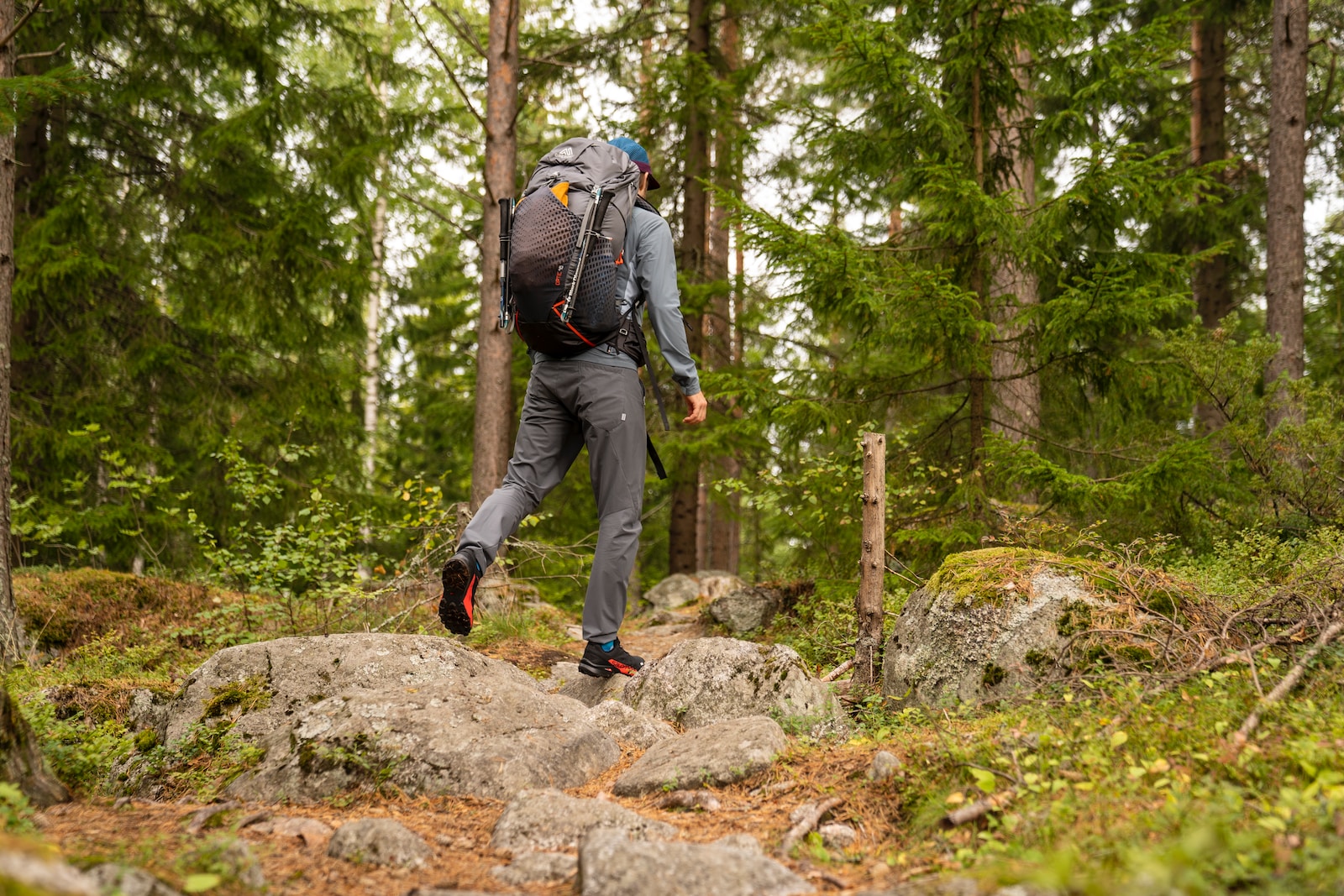
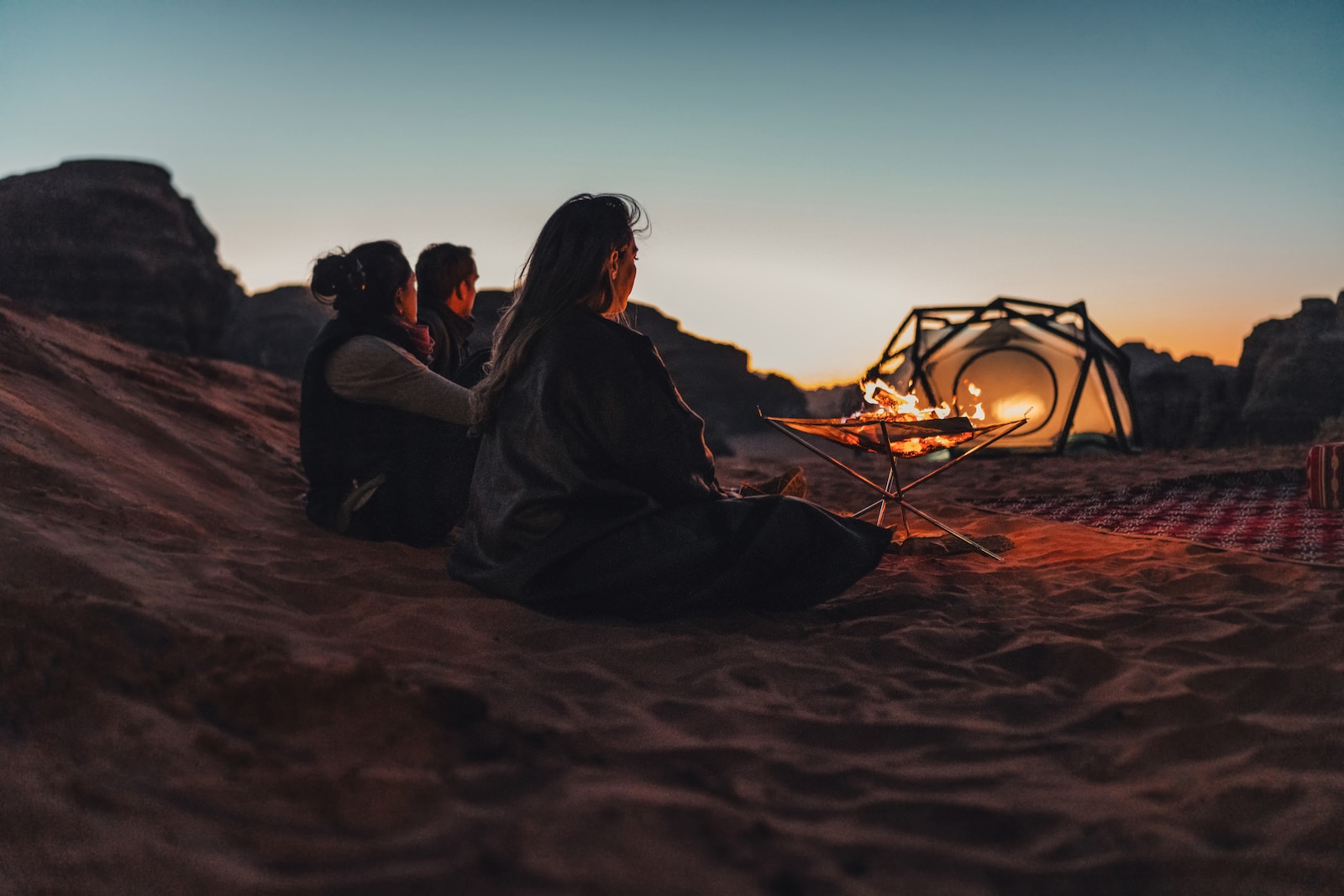
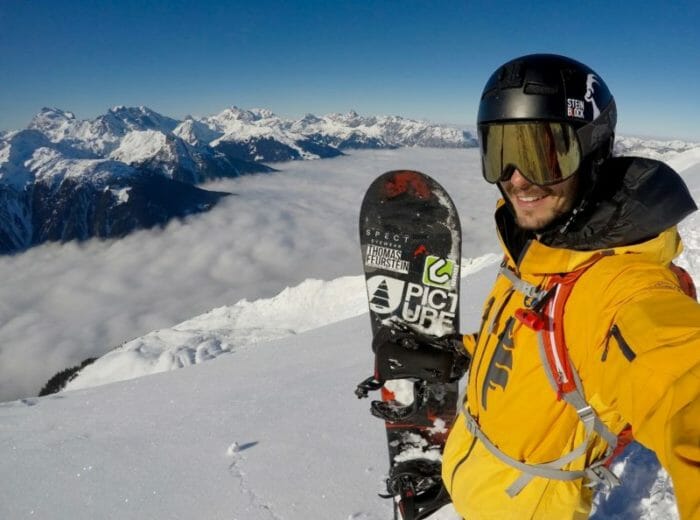
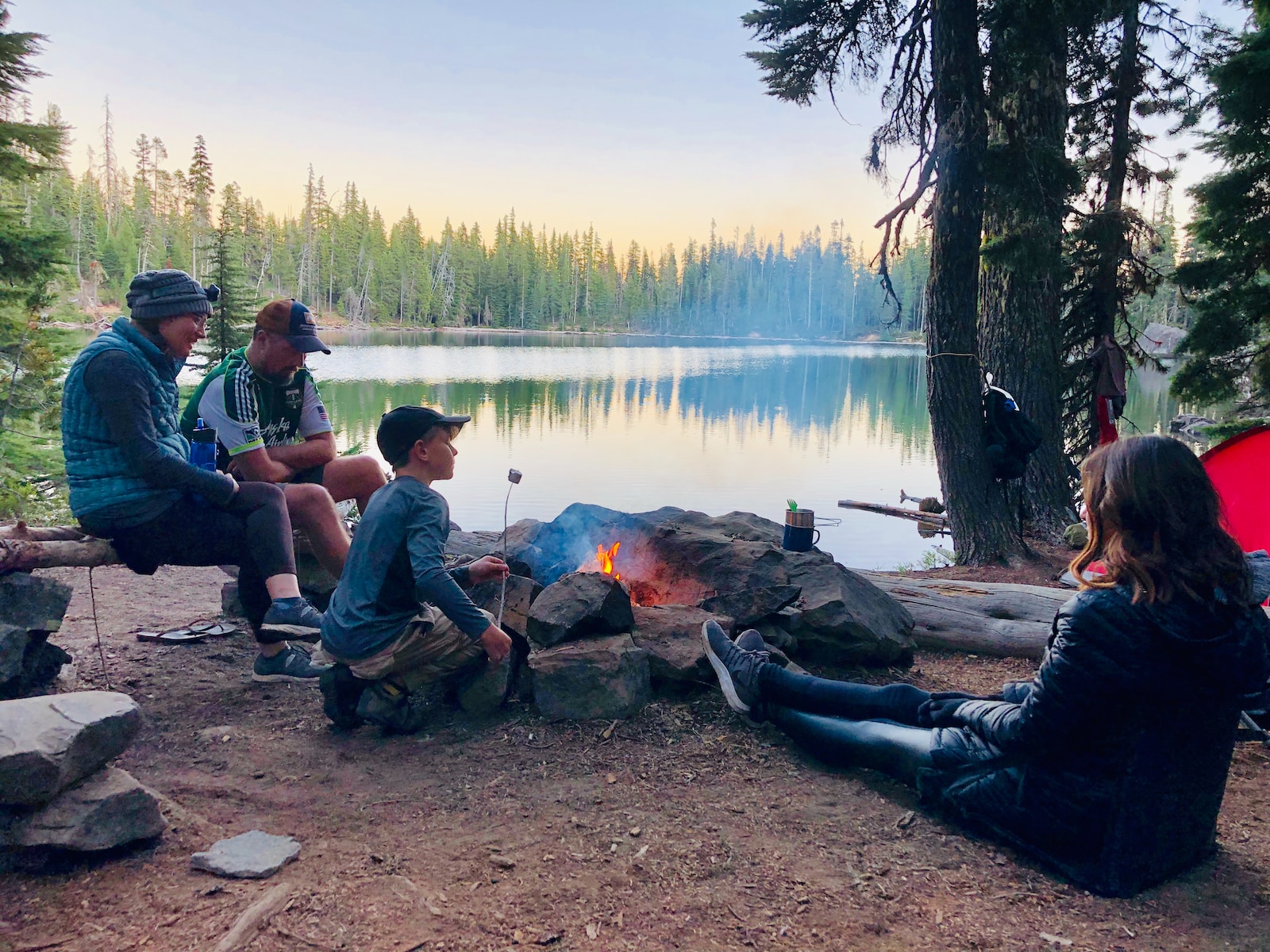
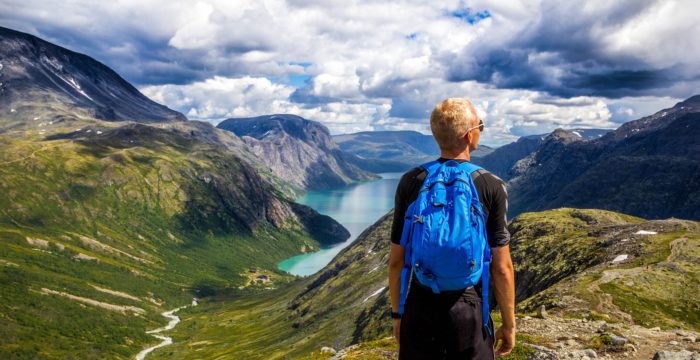
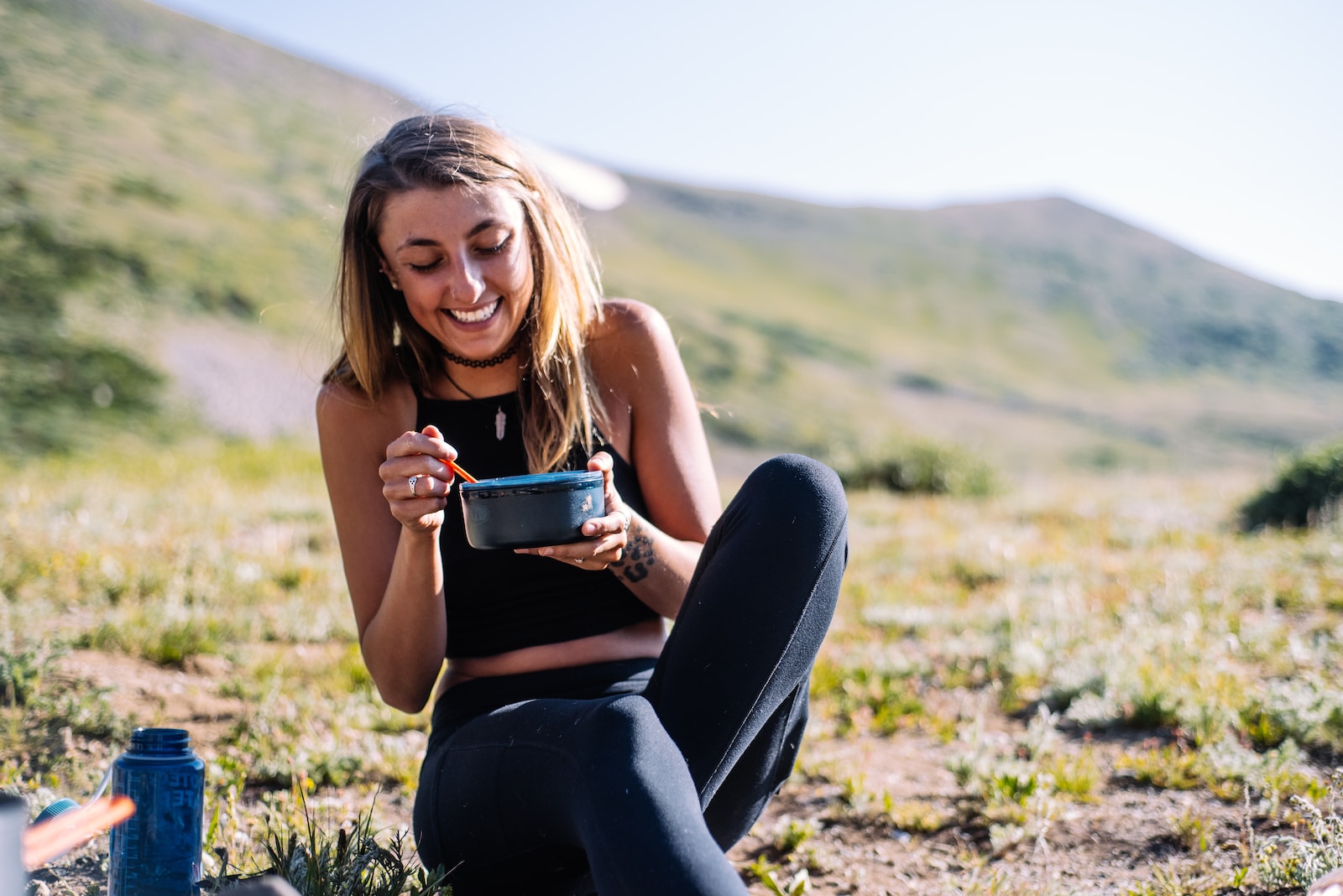

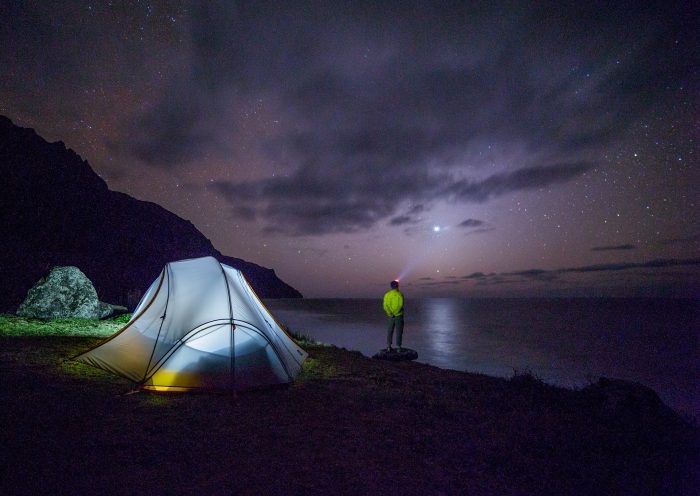
If you have any amazing tips of your own, make sure to share them here in the comments. I reply to all comments